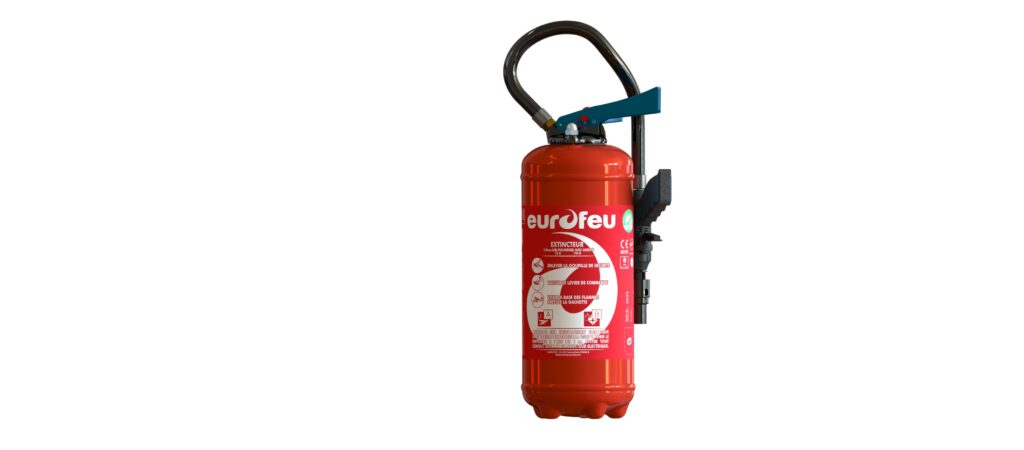What equipment is needed for fire training?

To guarantee effective fire training, a certain amount of equipment is essential. These include smoke generators for simulating real-life situations, rechargeable extinguishers for learning fire-fighting techniques, and fire trays. The use of teaching aids and equipment specific to fire safety is also essential. These teaching aids ensure optimum learning of first-aid techniques in the event of fire.
Understanding the importance of fire training
Well-structured fire training plays an essential role in plant safety. It enables employees to acquire crucial skills for responding effectively in the event of an emergency. Training includes various important elements, such as handling fire extinguishers and carrying out evacuation drills.
The benefits for companies are numerous:
- Reducing human and material risks
- Preparing employees to handle panic situations
- Compliance with legal obligations under the Labor Code
For example, during a practical exercise, employees can learn to identify and follow safe evacuation routes to an assembly point. These training courses, often led by experienced instructors, boost participants' confidence, enabling them to adopt the right actions quickly and calmly in a fire situation.
The rechargeable extinguisher: an essential tool
The rechargeable extinguisher is a fundamental teaching tool for fire training courses. It can be used to simulate realistic fire-fighting situations without risk to participants. Its ability to be quickly refilled with water makes it economical and practical, ideal for repeated exercises.
This equipment offers a hands-on learning experience by reproducing the gestures required to control a fire. Rechargeable extinguishers are often used in conjunction with flame generators, creating immersive training scenarios.
The advantages of this tool include :
- Durability: it can be used over and over again, reducing costs.
- Safety: the absence of chemicals makes it safe for learning.
- Practical: easy to handle and recharge, even for non-professionals.
These features make the rechargeable extinguisher an indispensable ally in any successful fire training program.
The smoke generator for realistic exercises
Smoke generators are essential tools for creating a safe, realistic training environment during fire training. They reproduce conditions close to reality by generating dense, non-toxic smoke, essential for simulating emergency situations.
Here are some of the advantages of using them:
- Total immersion: Participants can get used to the low visibility and stress of a real fire situation.
- Flexibility: They can be used in a variety of scenarios, from evacuation drills to ventilation tests.
- Enhanced safety: By practicing under controlled conditions, learners acquire the skills they need to act quickly and effectively in the event of a real fire.
The use of smoke generators in training courses helps to reinforce participants' reflexes and confidence, preparing teams to deal with fire emergencies.
Fire safety and educational materials
To guarantee effective fire training, the choice of teaching aids is crucial. The use of appropriate tools enables realistic situations to be simulated and trainees to be prepared for emergencies. Here are a few essential elements to consider:
- Educational extinguishers: Designed to teach the correct use of extinguishers without danger.
- Smoke and flame generators: These tools recreate realistic fire scenarios, reinforcing participants' practical experience.
- Rescue mannequins: for practicing rescue techniques in complete safety.
- Educational guides and booklets: These provide detailed instructions and help review safety procedures.
By choosing quality equipment, trainers can offer sessions that are both enriching and safe, reinforcing teams' preparedness in the event of a fire.
Fire training equipment
For a successful fire training course, several pieces of equipment are essential to guarantee learning and participant safety. Here is an overview of the essential tools:
- Educational fire extinguishers: These allow you to practice basic firefighting techniques in complete safety.
- Mannequins and flame generators: Used to simulate realistic situations, they help to understand the dynamics of a fire.
- Smoke generators: These reproduce conditions close to the real thing, with dense, non-toxic smoke.
- Training booklets: to reinforce theoretical knowledge and prepare trainees for practical exercises.
This equipment provides an enriching experience, enabling participants to react effectively in the event of an emergency. Using this equipment, trainers can create immersive scenarios that help develop essential fire safety skills.
Practical use of fire training equipment
To ensure optimum use of fire training equipment, it is essential to be familiar with the various techniques and equipment available. Practical training is enriched by the use of tools such as training extinguishers, which allow you to practice in complete safety.
Flame and smoke generators provide a realistic simulation that prepares participants to react effectively in the event of fire. Thanks to these immersive scenarios, trainees can develop reflexes crucial to their safety. Mastery of this equipment is reinforced by regular exercises, incorporating a variety of emergency situations.
To maximize the effectiveness of these training courses, we recommend incorporating interactive sessions. This makes it possible to adapt exercises to the specific characteristics of each establishment, and to improve the responsiveness of teams in the event of a fire.
The link between first aid and fire training
In the field of safety, first aid and fire training are closely linked. These two disciplines share a common goal: to protect and save lives. During an intervention, a thorough knowledge of first aid is essential to treat victims of burns or smoke inhalation.
Fire training often includes modules on personal assistance, aimed at preparing staff to react quickly and effectively. Essential skills include the use of first-aid equipment such as defibrillators and first-aid kits.
Training scenarios simulate emergency situations, reinforcing participants' ability to intervene. Through these exercises, teams learn to coordinate their actions to maximize chances of survival and minimize damage. This integrated training is essential to ensure a smooth and effective response in crisis situations.
Choosing fire training equipment: criteria and recommendations
When selecting equipment for a fire training course, several criteria must be taken into account to guarantee its effectiveness. First of all, make sure that the equipment complies with current standards and is suitable for the type of establishment concerned, whether it's a crèche or a logistics workshop.
Choose equipment that allows safe hands-on exercises, such as :
- Educational fire trays to simulate fires
- Smoke generators to recreate realistic conditions
- Rechargeable extinguishers for different types of fire
It is also advantageous to opt for interactive tools, such as virtual reality, which offer total immersion. Good teaching material not only enhances learning, but also strengthens teams' preparedness for emergency situations.


